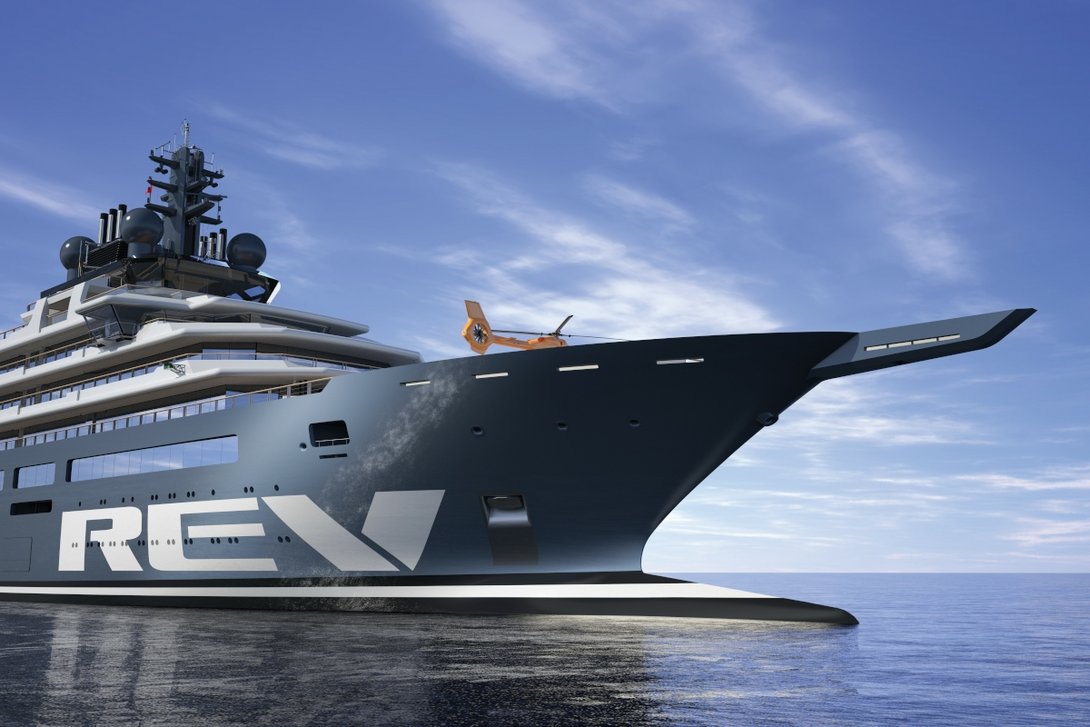Oceans free of plastic
A state-of-the-art research station – that is what will set sail on board the REV Ocean. The research vessel is intended to provide scientists with the best conditions for studying the state of the world‘s oceans, and developing specific solutions to environmental problems. We are just a little proud in reporting this, as Waldner laboratory technology is also being carried on board.
The initiative was launched by the Norwegian billionaire Kjell Inge Røkke. He signed up to “The Giving Pledge” campaign, launched by Bill Gates and Warren Buffett. The signatories undertake to donate at least 50 % of their assets. Røkke’s project is the REV Ocean. He largely finances the vessel, as well as its ongoing operation.
“I owe a lot to the sea,” states Røkke, “now I want to give something back”. The Norwegian began his career on a trailer off the Norwegian coast before spending some years in the USA. Today, he is the main shareholder of Aker ASA, which has investments in the offshore, fishing, shipyard and construction sectors.
The REV Ocean was launched in Romania and arrived at the Brattvaag shipyard in Norway later. The research technology will be fitted there. The almost 183-metre long yacht has already been equipped with a crane, a submarine with a diving depth of 2,300 metres and a trawler system that can catch fish and other marine animals from a depth of up to 3,000 metres.
State-of-the-art laboratory technology on the high seas
Waldner and the partner HECO – Laboratorieutstyr AS from Oslo were supplying the laboratories for the REV Ocean. They equipped 13 rooms: various wet laboratories, a biological, a chemical and a training laboratory. Everything will therefore be ready to immediately carry out ecotoxicological, geological and biological analysis on board the REV Ocean. The occurrence of various compounds, isotopes or microplastics as well as the water quality can be determined directly. Laboratories on a ship have special requirements that challenge even laboratory professionals, like Waldner. “It was a tricky task,” reports Thomas Kind, who supervised the project through the tender and design phase. “The design and engineering were particularly complex, as the requirements were more varied and differed from laboratories we would normally equip.”
Special solutions and instinct
The rooms in the yacht are very small and have an extremely low ceiling height of only 2.10 m. Waldner therefore needed to design the fume hoods completely differently to models for rooms with a normal ceiling height. The working height is lower and the sashes can only be opened to a limited extent. All cabinets and equipment are installed in such a way as to prevent their anchorages from coming loose under any circumstances. This is especially true with safety cabinets. Christof Wetzel from the project team continues: “A safety cabinet usually weighs a few hundred kilograms. It must not slide, of course, even in the roughest seas; no one would be able to hold it. So we developed special retainers to prevent this from happening.”
The engines will constantly vibrate the ship. This precludes the use of screws as a secure means of fastening. Instead, we used welding; the brackets for the service spines, for instance, are welded to the wall. The service modules are additionally glued. For safety reasons, the gas lines also need to be fully welded, unlike how it is normally done with Waldner service systems.
“Our precise working method is very beneficial here,” explains Wetzel. “A lot of things had to be prepared by the ship builder at the shell stage, which needed to be precisely defined in advance.” For instance, the ship‘s sandwich walls had to be reinforced where suspended cabinets would subsequently be fitted. Only by doing this would they be able to withstand this load.
A special consideration is also the constant contact the equipment will have with salt water, to which the wet laboratories are exposed. Special materials are used here that are extremely corrosion-resistant and totally water-resistant: a quality of stainless steel that is otherwise only used outdoors (V4A) and a solid (grade) laminate HPL (High Pressure laminate) plinth. Non-contact fittings were installed everywhere, as they would corrode very quickly with frequent contact. Ultimately the installation also requires a lot of instinct and inventiveness. The laboratories are located in the lower decks and the stairs and passages are very narrow. Separate access needs to be found into the inside of the ship for the larger components. Some are brought on board through supply hatches. However, the safety cabinets could not be brought on board and moved into position in this way. A hole had to be cut into the deck for them, which was then welded back in place again.
Researching plastic waste and climate change
The final equipment will be fitted onto the REV Ocean in Bremerhaven. Even if the time scale is delayed, the entire team is highly motivated to ensure that the ship can start work as soon as possible. Then 60 researchers will work and live on what is to date the world‘s largest research and expedition ship. 30 crew members will supply the crew and the ship. The research work will focus on issues, including plastic waste, climate change, overfishing of the seas and the negative environmental impact of fishing.
